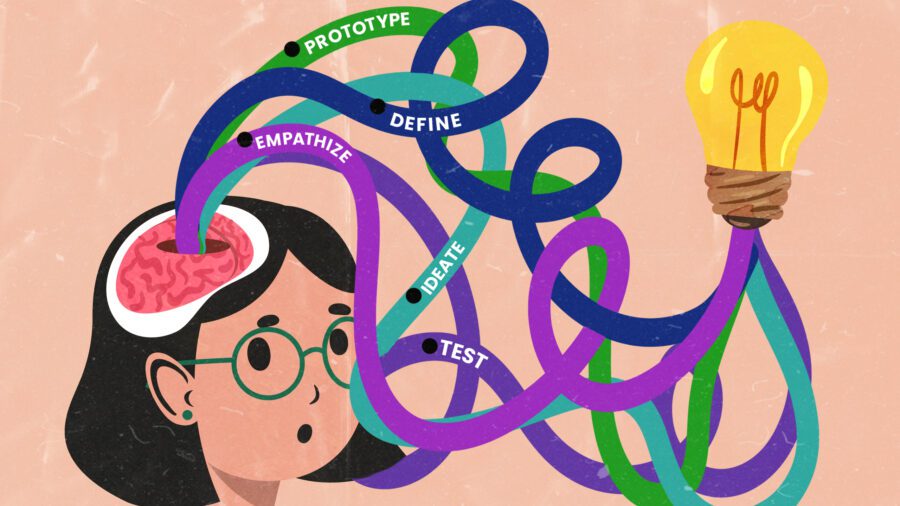
11 Simple Ways You Can Live More Sustainably and Make the Earth Happy
Can a simple habit change the world?
The Earth is a huge place — it’s easy to think our day-to-day lives don’t have much of an impact on the planet. However, this thought could not be farther from the truth. In fact, it’s the mundane, simple actions we take every day that impact the Earth for better (or worse)!
Here’s the great news: you (yes, you!) have the power to take control of your actions and make the world a healthier, more sustainable place. Before diving into how we can have a positive impact, let’s begin by defining what sustainability truly means.
What Does It Mean to Live Sustainably?
The United States Environmental Protection Agency defines sustainability as “everything that we need for our survival and well-being depending, either directly or indirectly, on our natural environment.” Simply put, sustainability is about finding balance in the ways we as humans and nature can coexist with as minimal negative impact on each other as possible.
Why does sustainability matter? Well, we’ve already established it’s finding that critical balance between ourselves and nature, but we can take steps to ensure that we and the world around us both thrive, not just get by. Living longer, healthier lives and guaranteeing resources in the future is just plain responsible!
So, how do we live well without upsetting this delicate balance? Fortunately for us, it’s not that difficult as it sounds — it all comes down to making some simple adjustments in our lifestyles. Here are 11 easy ways YOU can make a huge impact and give back to the Earth.
#1: It All Starts at Home
It’s like the old saying goes: It all starts at home. Our homes offer us many great ways to lower negative environmental effects and even put some money back in our pockets, too! Having a programmable thermostat or converting to LED lighting greatly reduces power consumption, lessening our drain on power grids and our power bills.
Even better — solar or wind energy options can make us carbon neutral or even negative, and there are incentives for installing these energy sources in our homes. Even if those changes are too big to make immediately, many power companies offer free energy audits so we can see where we can consume less, even if we’re living in rental homes.
The government offers many resources online to help us move towards solar and wind energy in our homes. As of September of 2022, installing solar power capabilities in our homes can net us a 30% tax credit in addition to the reduced power costs! Additionally, there are many incentives offered for constructing wind power generating structures on our property.
#2: Decrease Negative Environmental Impacts of Plastic
Plastics have become one of the foremost dangers to keeping nature sustainable. From the turn of the century, plastic production worldwide has eclipsed what was produced from 1940 – 1999. These plastics take decades to degrade, and as they do, microparticles invade our air and water. We consume these particles in our bodies by breathing and drinking, where their long-term effects are just now starting to be discovered.
We know that one-time-use plastics are an environmental issue, and many of us try our best to recycle to help, but did you know that only 10% of all plastic is currently being recycled? Even biodegradable bioplastics such as polylactic acid (PLA) require very specialized composting facilities to be properly reprocessed. If not handled this way, PLA can still take upwards of three years to completely biodegrade.
Here’s the good news: there are quite a few simple measures we can take to reduce our reliance on these plastics. Using refillable water bottles can help us avoid one-time use bottled waters, and similarly, using reusable cloth or canvas shopping bags allow us to cut down on plastic alternatives.
Opting for items with minimal packaging to reduce the amount of waste we throw away cuts down on how much is sitting in our landfills and harming our planet. Remember — you have the power to make a difference!
#3: Drive Less & Move Your Body
It’s no secret: vehicle emissions and the fuel they use exact a sizable toll on our environment. While electric and hybrid vehicles are clearly preferred alternatives, other factors, such as the cost and readily available charging stations, still hinder some of us from making the switch.
If you’re not in the position to purchase an electric vehicle, know that there are still steps you can take to lessen your usage! When purchasing a gasoline vehicle, pay attention to the fuel economy of said vehicle. There are also some easy ways you can maximize your fuel economy, such as avoiding excessive idling, using cruise control, and accelerating at a steady rate. Just making sure your tires are properly inflated can increase fuel economy up to 6%!
If public transit is available in your area, you can use it instead of turning the key in your ignition. Or even better, can you hop on your bicycle or walk to a location instead of climbing behind the wheel? If so, you can reduce those emissions and get the added benefit of some exercise!
If you have to hit the road, look at combining trips to cut down on your travel. Instead of making multiple trips to run errands, plan out a single route that reduces how much time your car is running the road.
#4: Mitigating Climate Change Through Clothing Choices
Did you know that even the clothes on our backs give us the chance to make a difference?
What we wear and not wear has a lot more impact on our climate than we probably realize. Materials such as nylon and polyester are not biodegradable, and their production has major environmental effects, such as nitrous oxide emissions (which are 310 times worse than carbon dioxide as far as greenhouse gasses go) and harmful waste.
Even natural fibers such as cotton come with downsides, such as the pesticides used in growing them and the effects they have on the workers harvesting them. Buying used from thrift shops and secondhand stores reduces our reliance on new products that use these materials. And if you’re looking to freshen up your wardrobe, shop for alternative fabrics like hemp, organic cotton, and bamboo, which offer more sustainability without sacrificing durability!
Join In 200 Million+ On The Journey to Greatness
#5: What’s for Dinner…
Food is the fuel that lets our bodies thrive, and it’s yet another way we can move towards sustainability. The meat and dairy industries combined use a third of the planet’s fresh water.
While not every one of us might desire to go full vegan/vegetarian, we can all acknowledge the benefits that mixing veggies into our menus have on our health. The American Diabetes Association, American Cancer Society, and World Health Organization, among others, all recommend a more plant-based diet.
Simply dedicating one day of the week to going meatless carries great benefits, and even reducing the portion sizes of the meat and dairy products we consume makes a difference. Furthermore, moving towards a whole-food, plant-based (WFPB) diet can reduce the chances of Type 2 diabetes, heart disease, and more while still getting us all our nutrients, including protein!
#6: …And How Are We Eating It?
Let’s face it — sometimes we don’t want to deal with dishes, or we have guests over and bust out the plastic utensils so that we can toss them afterwards. This disposable dishware might be easy for us to deal with, but it’s not so easy for the world around us to do the same.
Alternatives made from such low-impact, sustainable materials as avocado bioplastic, Areca Palm Leaf, and bamboo offer the same functionality with additional benefits and few drawbacks. All are greatly sustainable and offer varying reusability, with Areca products being hand washable and microwaveable, and avocado bioplastic being fully biodegradable.
#7: Make Money Recycling & Give Back to the Earth
We all accept that recycling is a very responsible thing for us to do, but it’s also become a pretty good side hustle, too! Companies like Amazon, eBay, and Decluttr are places where we can sell back old textbooks, standard books, or unused electronics. We can also look for local used bookstores that buy from customers, as well.
If we find ourselves with boxes cluttering up our homes from moving or online shopping, BoxCycle or localized websites like Craigslist can help keep them out of our trash cans. Stores such as Staples or Office Depot will issue store credit when we turn in our old ink cartridges, and companies such as AutoZone and Advance Auto Parts offer credit for dead car batteries.
And speaking of batteries, instead of just tossing those old ones out of our remote controls, Ecocell will take them off of our hands and keep them out of landfills!
#8: What Is Upcycling?
Upcycling is the current term we use to describe repurposing or refreshing worn items that might otherwise be finding their way to the curb on trash day. Imaginative individuals all over the world have posted their creative ideas for upcycling everything from old furniture to wine corks. There’s no shortage of places we can go for inspiration, whether it be Pinterest, TikTok, or any of the many websites Google can lead us to!
Next time you need a new piece of furniture, clothing, or a household item, opt for “used” versus “new” when possible to make the most out of what already exists on this Earth. Plus, you never know what incredible creations you’ll design from forgotten items!
#9: Grow Your Own Vegetables
We’ve all had that juicy piece of fruit or tasty veggie that we picked up from a farmers’ market and thought, “We should plant some of these at home!” Unfortunately, growing and harvesting our own vegetables isn’t as simple as it sounds. We might not have enough space to plant rows of tomatoes, corn, or other vegetables we love.
Here’s the good news — no matter how little space we might have, we can adapt our space to fit our vegetable needs. One great way to start growing your own produce is by planting herbs!
When we go to the store, we’re faced with the choice of the processed herbs in a glass or plastic bottle, or we may head over to the produce section to grab some fresh that’s in a convenient little plastic holder. But there is another choice we might not have even realized: potted herb plants.
Many of these potted herbs are the same price as their shelved counterparts but without the packaging that will go in the garbage or a short shelf life. Plus, they give the added benefit of sustainability!
Building a small, inexpensive window box gives you a place to grow your own fresh herbs. You can even keep them in pots or build a standing herb garden, depending on how much space you have.
And, of course, if you do have the space to grow your own vegetables, go for it! Consider building your own greenhouse to make the most of your produce, and enjoy the added health benefits of home-grown foods.
#10: Composting
So, now that we’ve got our little (or big!) gardens set up and ready to grow all sorts of fresh goodness, we can make an even greater impact by composting. Per the United States Environmental Protection Agency, compostable waste, such as food scraps and yard waste, makes up almost a third of what we put in our trash.
When these types of waste go into landfills, they contribute to greater greenhouse gasses being produced, which composting these materials helps prevent. We’ve all heard the joke about raking up those biodegradable leaves into giant, non-biodegradable plastic bags. Putting those dead leaves to work by composting them with our food scraps can give us great, nutrient-rich fertilizer to use in growing better, healthier produce and herbs.
Need a composting container? There are both big and small options, depending on your needs!
#11: Be Water Wise
Water conservation is now more important than ever.. According to the U.S. EPA, at least 40 states are looking at water shortages by 2024. We can help head these shortages off by making adjustments to our own water usage. Reducing our shower times or shutting the water off while shaving or brushing our teeth are no-brainers, but there are other ways to make our homes more water efficient!
Ensuring our faucets or toilets don’t run or leak can cut water waste significantly. If you’re faced with having to replace your toilet, looking at the gallons per flush when shopping for a replacement is a great way to be earth conscious. Additionally, high-efficiency washers and dryers not only use less water than alternatives, but they also typically have better Energy Star ratings, which lower their power consumption and, in turn, our power bills.
Small Steps, Big Strides
With just slight adjustments to our everyday lives, we can help build more sustainability across the board and benefit this Earth we call our home.
Remember — the changes we make don’t have to be huge. Recycling, composting, and upcycling can get us closer to zero waste. Moving towards a more sustainable plant-based diet benefits our own lives as well as the world. Whatever you do, it doesn’t matter how small the step is as long as it’s in the right direction.
Greatness Authors
Greatness Authors is a collection of writers, thinkers, curiosity experts, and students of the world who are committed to bringing you the most up-to-date, impactful, and inspiring information surrounding Greatness topics.

Redefining Poetry: How Instagram Sensation Rupi Kaur Showed That Poetry Is for Everyone

The Young Professional’s Guide to Advocating for Yourself at Work & Setting Healthy Boundaries

Olympian Yusra Mardini’s Incredible Story of Resilience, Rescue, and Refugee Rights

A Beginner’s Guide to Effortlessly Attracting Money and Growth Opportunities

Psychologist Edith Eger’s Inspirational Journey to Find Forgiveness and What It Means for You










